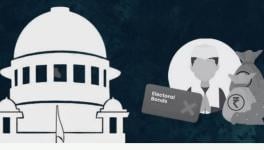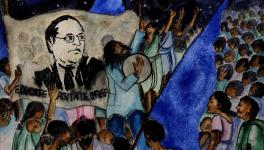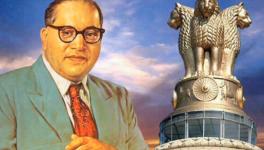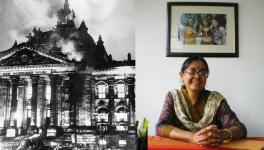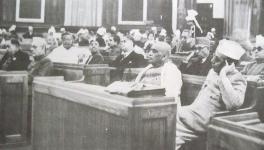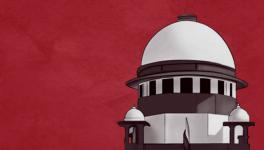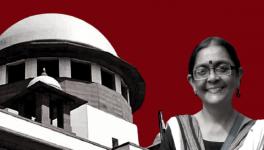Crass Vote-Bank Politics is the Real Motive of EWS Quota
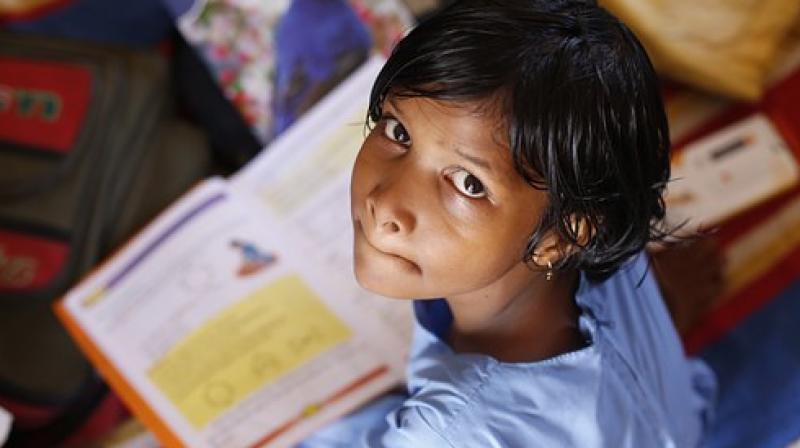
Image Courtesy: Pixabay
These are strange times. In the US, the far right under Donald Trump has been more vocal than the liberals about economic and class issues, from inflation to job losses. In India, the Hindutva right-wing regime is trying to create job opportunities in the public sector for the economically weaker sections (EWS).
Through the Constitutional (124th Amendment) Bill of 2019, the Modi government reserved 10% of seats for the EWS. At first glance, the move might seem gung-ho—a genuine attempt to help the EWS. On digging a little, the flaws would start revealing themselves.
The Amendment, which has now got the nod of the Supreme Court, turns the logic of affirmative action in India on its head. The reservation policy was introduced neither to achieve economic emancipation nor to correct economic inequalities. Its sole raison d'etre was to correct the social injustices created by the centuries-old caste system. As Babasaheb Ambedkar and the sensible makers of the Indian constitution knew very well, economic inequalities were part and parcel of a capitalist state. Reservations in the government sector would benefit only a minuscule and microscopic minority among the targeted groups. Economic inequalities, as the experience of India so far has shown, require radical structural transformation such as land reforms, an end to monopolies, a decent floor wage, and finally, the end of capitalism. None of these measures was/is within the ambit of the reservation policy in India.
On the contrary, with the rollback of the public sector and the rise of the private sector, and the presence of the informal sector, which constitutes 93& of the workforce, the latter two are beyond the pale of basic social security measures, not to speak of reservations. Reservations end up employing only 7% of the total workforce in India.
For the lack of a proper statutory definition, the word' social' is a tad bit different from the political, economic, and cultural. Social refers to an ensemble of the total relations in the society, including the economic, political, and cultural. And social backwardness can result from the presence of any one, i.e., economic, political, or cultural backwardness, or a combination of two or all. Unfortunately, India's scheduled castes (SCs) and scheduled tribes (STs) have faced backwardness on all fronts.
In India, however, the presence of the caste system as the most primary, solid, and relentless social scaffolding blunts the economic criteria as both a necessary and sufficient condition for backwardness. So, suppose even if a dalit is economically well off, they would still be considered a social pariah by both the rich and poor among the upper castes. Moreover, it is also difficult to be economically sound without a semblance of social mobility. Enslaved people, for instance, could never become rich in America without complete social emancipation. Similarly, lacking social emancipation, the lower castes, as a social class in India, too, cannot achieve economic mobility. It is, therefore, no surprise that the National Sample Survey Organisation (NSSO), in its 66th round surveys, found that the proportion of rural SC households who own land was at just 17.1%, out of which nearly 61% holdings are small, i.e., less than two hectares.
It was to correct this very social backwardness that the reservation policy was brought out in the Indian Constitution. In India, the markers of social backwardness were/are many. From the inhuman practice of untouchability to a monopoly over learning and getting education by the upper castes, the Indian caste system was/is marked by unparalleled social disabilities. Reservations allowed for the SCs, STs, and later the OBCs to be present at places such as colleges, universities, public sector industries, the bureaucracy and police, and the assemblies to which they were denied honourable entry.
The EWS quota is meaningless if analysed from the lens of social backwardness and how it unfolds in India. The main motive behind bringing it is to solidly consolidate the upper caste votes in favour of the BJP. The 2014 election manifesto of the BJP did not mention the EWS quota policy. It was only after winning the 2017 Uttar Pradesh assembly elections that the BJP seriously considered taking up the EWS quota issue. In Uttar Pradesh, 12% of the population are brahmins, who also make up some 40% of the country's brahmins, who had earlier voted for the Congress and the BSP, which made the experiment all the more necessary.
The elections witnessed the breakup of old caste arithmetic as huge sections of non-Yadav OBCs and non-Jatav SCs, and an overwhelming majority of upper castes voted for the BJP. It encouraged the party to carry forward the EWS quota for the upper castes. The BJP clearly understood that providing such a quota to the upper castes might anger the dominant SC and OBC groups but would leave other marginalised SC and OBC groups unaffected since the latter have hardly benefitted from reservations vis-à-vis their dominant caste compatriots.
In the 2019 election manifesto, the BJP included the EWS quota promise. Whispers metamorphosed into loud declarations. This helped in the further consolidation of upper-caste votes behind the BJP. According to a Quint report, the formidable SP-BSP-RLD alliance in Uttar Pradesh was routed as the BJP-led National Democratic Alliance (NDA) won 64 out of 80 seats. Here the NDA managed to consolidate every group except the Muslim-Yadav-Jatav core support base of the opposition alliance. NDA got 82% Brahmin, 89% Rajput, 70% Vaishya, 84% other upper castes, 80% Kurmi, and 70% other OBC votes, as per a post-poll survey by Lokniti-CSDS. In Madhya Pradesh and Rajasthan, two of the states that the BJP lost to the Congress in December 2018, many upper castes, OBC, and tribal voters who voted for the Congress and other parties in December shifted to the BJP during the Lok Sabha elections.
The BJP knows very well that the upper castes, across classes, have harboured angst against the reservation policy in the name of the abridgment of merit. The BJP is also aware that it is a natural choice for the upper castes, among whom Hindutva has become a default political choice. Another factor in favour of the BJP is that there exist no fractures among the upper castes as it exists among the dominant and marginalised SC groups and dominant and marginalised OBC groups. By keeping the EWS quota eligibility ridiculously high at Rs 8,00,000/annum, the BJP has tried to avoid the possibility of a class cleavage and class war between the well-off and the poor among the upper castes thereby consolidating their votes en bloc in the party's favour.
As a contrarian argument, it must be said that if the BJP wished to cater to the upper castes, the best way would have been to give the poor among them reservations in proportion to their population, just the way the SCs and STs have reservations in proportion to their population. Simply put, since the proportion of the 'real' poor, i.e., those who are landless, fall below the poverty line and earn less than fifteen thousand rupees a month mong the EWS is much higher than just 10%, the arbitrary capping of 10% must be then removed along with bringing down the Rs 8,00,000 annual income criteria to almost Rs 50,000-2,00,000 to benefit a larger percentage of poor among the EWS.
For instance, the S.R Sinha Commission has noted that 35.3% of those in the general category did not possess any land, against 39.1% of OBCs. Therefore, even if landlessness is a factor of economic backwardness, the quota for the EWS would perforce rise to 35%, making the Rs 8,00,000 income criteria redundant. Such facts suggest that the poor among the upper castes constitute a much higher proportion than a meagre 10%. A downsizing of income criteria might also favour the unreserved sections of Muslims and Christians. The BJP is giving a flavoury lollipop to a horde to consolidate votes. The above argument could prove to be the Achilles' heel for the BJP's EWS quota scheme as it will give rise to something that the BJP is mortally afraid of—class war—and that too among the EWS!
Amusing hypocrisy also reveals itself here. The upper castes, who have generally opposed reservations on the grounds of merit, are now welcoming EWS reservations. During 1991 anti-Mandal agitations, upper caste women felt threatened at the possibility of job loss of upper caste men. They carried placards that read 'who will find suitable husbands for us'. If not anything else, 10% of the upper caste women now have their moment of joy. What happens to the rest 90%, remains to be seen.
Another major problem with the EWS quota system is its specifically upper caste bias. The EWS quota is specifically for the upper castes. No SC, ST or OBC group falls under its purview. The moniker 'economically weaker sections is a euphemism to serve upper caste interests. In defence, the BJP might say that poor Muslims and Christians not covered under the SC reservation scheme are eligible to apply under the EWS quota. Such expectations would be foolhardy, to say the least.
Firstly, the cramming of upper castes, especially those belonging to the upper and middle classes, in the EWS quota list would be better equipped with the necessary social capital and would trump any chances of poor Muslims and Christians making good of the EWS quota policy. Secondly, the Modi government has an inherent bias for the upper castes. It is proven that until August 2019, only one out of the 89 secretaries posted at the Centre belonged to the SC community, while three belonged to the ST community, and none belonged to the OBC category.
Furthermore, of the 93 additional secretaries in Central government ministries, just six were SCs, and five were STs, while there were no OBCs of this rank either. Among the 275 joint secretaries, 13 (4.73%) are SCs, nine (3.27%) are STs, and only 19 belong to the OBC category. The number of civil service candidates short-listed by the Union Public Service Commission (UPSC) dropped by almost 40% between 2014 and 2018, from 1,236 to 759.
Since 2014, both the Principal Secretaries of the Prime Minister have been brahmins. The first of whom, Nripendra Mishra, was duly brought in through an amendment to the Telecom Regulatory Authority of India (TRAI) Act, 1997 because a section of the Act barred an ex-Chairman of TRAI from holding any office under the Government of India post-retirement.
Another glaring example of the Modi government's failure to deliver on the existing SC, ST and OBC reservation is that of unfulfilled vacancies in public universities. In response to an RTI in 2021, the Minister of Education revealed that in all the Central Universities as on April 1, a total of 2389 posts reserved for SCs were lying vacant against 5737 sanctioned reserved posts. Of the 3097 sanctioned reserved posts for STs, 1199 posts were vacant, and for the OBCs, 4251 posts were lying vacant out of the 7815 reserved sanctioned posts. This was true of other premier institutions too. In the Indian Institute of Science Education and Research (IISERs), of the 71 sanctioned reserved posts for the SCs, 28 posts were lying vacant. In contrast, at the Indian Institute of Science (IISc), 168 posts were reserved for the SCs, but 34 were lying vacant.
The Modi government has also done well to reduce the funds earmarked for dalit education as part of the SC Sub-Plan, a subcategory of the annual budget. It is supposed to be proportional to the demographic weight of the dalits, 16.6%; it fluctuated between 9% and 6.5% during Modi's first term. As a result, scholarship funds were reduced drastically. Nearly 5 million dalit students have reportedly been affected by this reduction and subsequent payment delays.
To conclude, the EWS quota is at fault on many fronts. The SCs, STs, and OBCs, especially the poor, are not eligible. It is also a tactic to diverge attention from the much-needed caste census report. It is not justice but crass vote bank politics that lie underneath the EWS quota scheme.
The writer is a research scholar in the Department of Political Science, University of Connecticut, US. The views are personal.
Get the latest reports & analysis with people's perspective on Protests, movements & deep analytical videos, discussions of the current affairs in your Telegram app. Subscribe to NewsClick's Telegram channel & get Real-Time updates on stories, as they get published on our website.









